Concrete Vibrator
When you are looking for a concrete vibrator, we can assist you in selecting the most suitable concrete vibrator for your business.

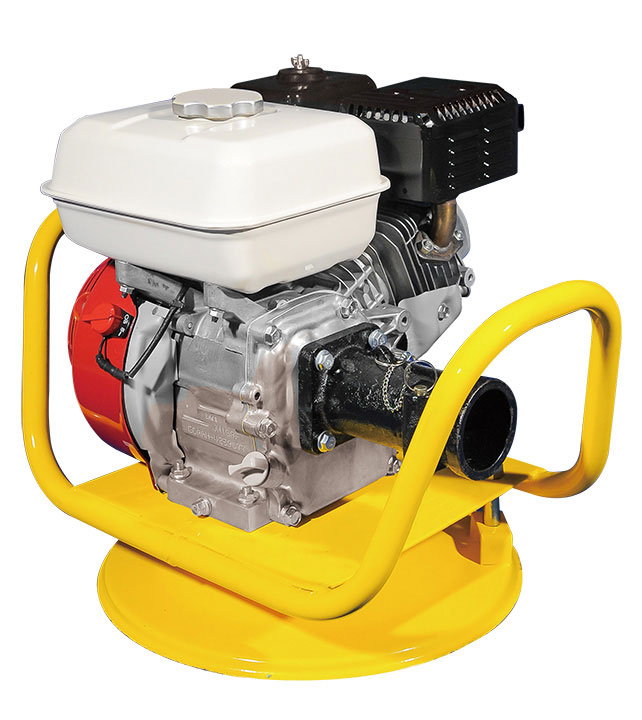
Description
A concrete vibrator is a device used to eliminate air bubbles and ensure proper consolidation of concrete. It works by agitating the concrete mixture, causing the particles to settle and compact tightly, leading to a stronger and more durable structure.
A concrete vibrator uses an off-centered weight, which is spun as much as 10,000 times a minute, causing large air pockets in the concrete to disperse as the concrete is shaken. Especially in pours of low slump concrete, which uses minimal water, the use of a vibrator is essential to ensure that the concrete does not bubble or form holes. In cases where consumers will be looking at the finished concrete, as is common in some schools of design that employ concrete counters and floors, this tool will help create an even and attractive surface, rather than one that may be slightly ragged.
| Model | V28 | V32 | V38 | V45 | V50 | V60 | V70 |
|---|---|---|---|---|---|---|---|
| Poker diameter [mm] | 28 | 32 | 38 | 45 | 50 | 60 | 68 |
| Rotational speed [rpm] | 3000-3600 | ||||||
| Dia. of flexible hose [mm] | 25 | 30 | 30 | 30 | 36 | 36 | 36 |
| Dia. of flexible shaft [mm] | 8 | 10 | 10 | 10 | 13 | 13 | 13 |
| Length [m] | 6m (4-10m as optional) | ||||||
| N.W.[kg] | 9.5 | 12.5 | 13.5 | 14.5 | 19.5 | 23 | 24.5 |
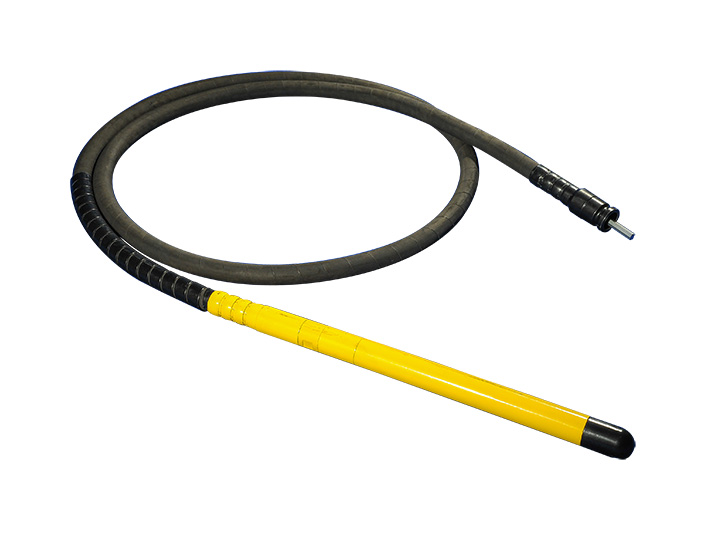
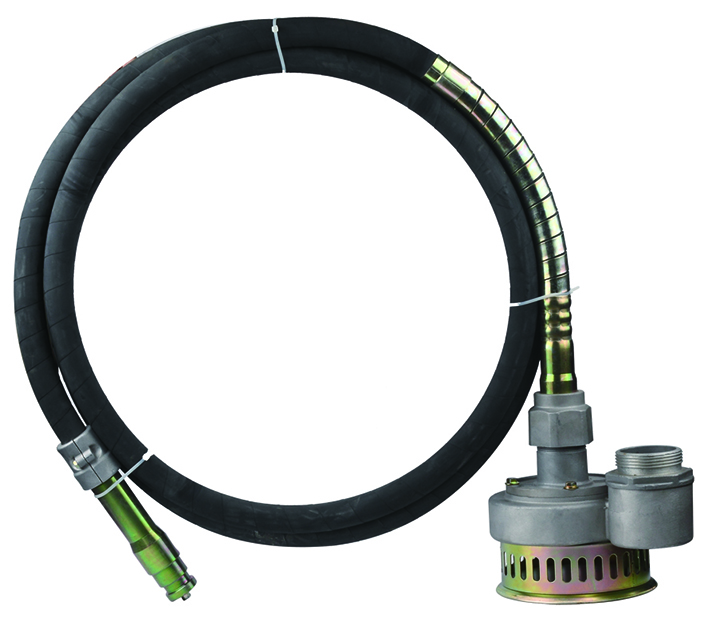
| Submersible Pump Specification | ||
|---|---|---|
| Diameter [inch] | 2 | 3 |
| Length [m] | 6m (4-8m as optional) | |
| Delivery height [m] | 20 | 15 |
| N.W./G.W. [kg] | 4.6 | 4.4 |
Portable concrete vibratory
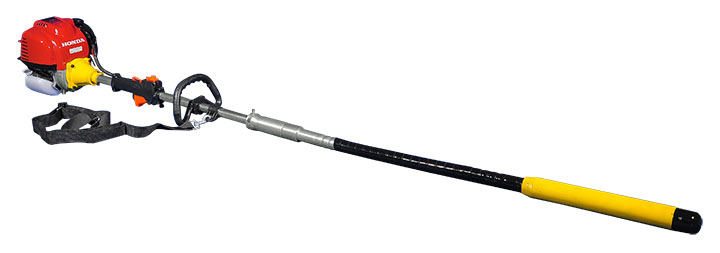
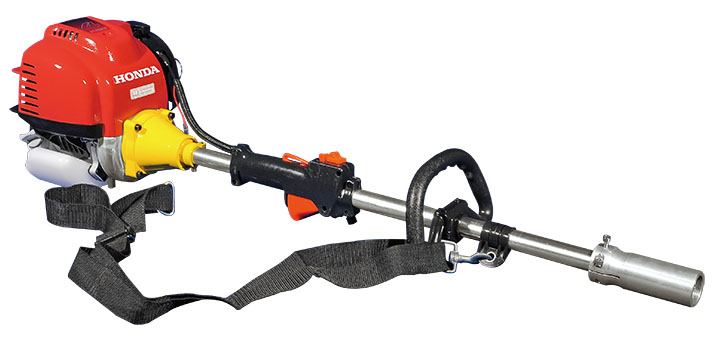
| model | PME-PVH | PME-PVHS |
|---|---|---|
| Engine | Honda GX35 | Huasheng 140FA |
| Displacement [cc] | 35.8 | 31 |
| Engine power [HP] | 1.2 | 1 |
| Rated power [KW] | 0.95 | 0.65 |
| Speed [RPM] | 7000 | 9500 |
| Fuel tank capacity [L] | 0.63 | 0.6 |
| Oil tank capacity [L] | 0.1 | 0.07 |
Vibrator poker: V35; V38; V45
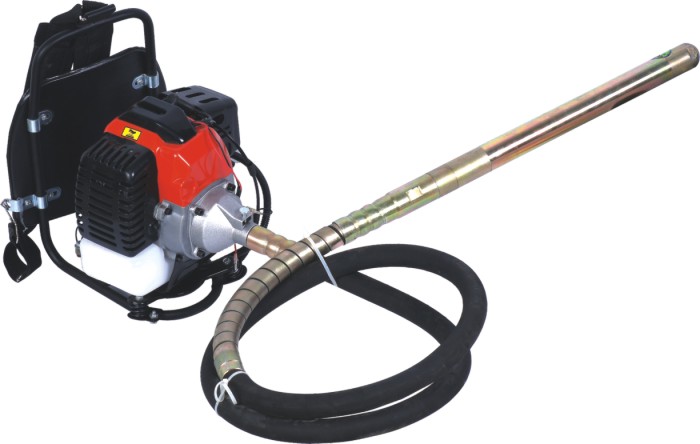
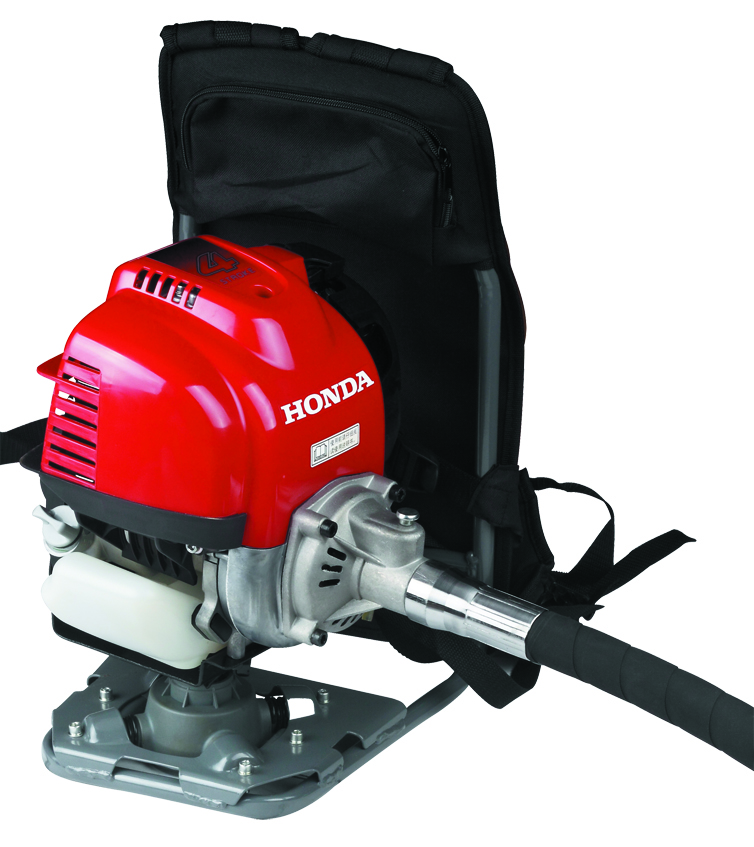
| Model | PME-BV |
|---|---|
| Engine | Honda / HuaSheng |
| Engine type | Air-cooled,single cylinder,4-stroke,petrol engine |
| Rotary speed [r/min] | 7500 |
| Vibrating poker diameter [mm] | V32x3m; V38x3m |
| N.W./G.W. [kg] | 8/10 |
Electric Vibrator Technical Data
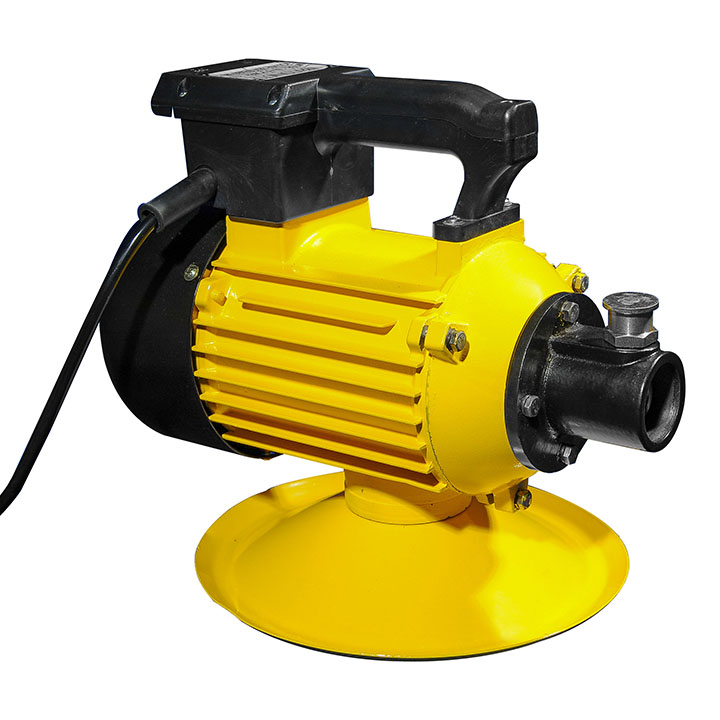
| Model | PME-VE-1.1KW | PME-VE-1.5KW | PME-VE-2.2KW |
|---|---|---|---|
| Motor | Electric motor | Electric motor | Electric motor |
| Rated power [KW] | 1.1 | 1.5 | 2.2 |
| Voltage [V] | 220 | 220 | 220 |
| Frequency [Hz] | 50/60 | 50/60 | 50/60 |
| Phase | single phase | single phase | single phase |
| unloaded Speed [RPM] | 2850 | 2850 | 2850 |
| N.W./G.W. [kg] | 14/16 | 16/18 | 17/19 |
Vibrator poker: V28; V32; V38; V45; V50; V60; V70
Eccentric concrete vibrator
Strong plastic housing with double insulation and water-proof protection. Maintains a constant speed in the consolidation process regardless of slump. Requires less power consumption, using only the energy necessary for job completion. Vibrator with an ergonomic hand grip for operator comfort.

| Model | Electric Motor Power(kw) | vibrator head Dia.x length | Vibrating Frequency(vpm) | Rotational Speed(rpm) | Vibrating Amplitude(mm) | Diameter of Flexible Hose(mm) | Diameter of Flexible shaft(mm) | Length(M) | Weight(kg) |
|---|---|---|---|---|---|---|---|---|---|
| PME-EV-25 | 2.2 | 25*285 | 12000-18000 | 9500-14000 | 0.8 | 27 | 9 | 5-12m | 12 |
| PME-EV-32 | 2.2 | 32*366 | 12000-18000 | 9500-14000 | 1 | 27 | 9 | 5-12m | 13 |
| PME-EV-40 | 2.2 | 40*335 | 12000-18000 | 9500-14000 | 1.2 | 27 | 9 | 5-12m | 14 |
| PME-EV-48 | 2.2 | 48*335 | 12000-18000 | 9500-14000 | 1.3 | 27 | 9 | 5-12m | 14.5 |
| PME-EV-58 | 2.2 | 58*344 | 12000-18000 | 9500-14000 | 1.5 | 27 | 9 | 5-12m | 16 |
Vibrator poker: V25; V32; V40; V48; V58
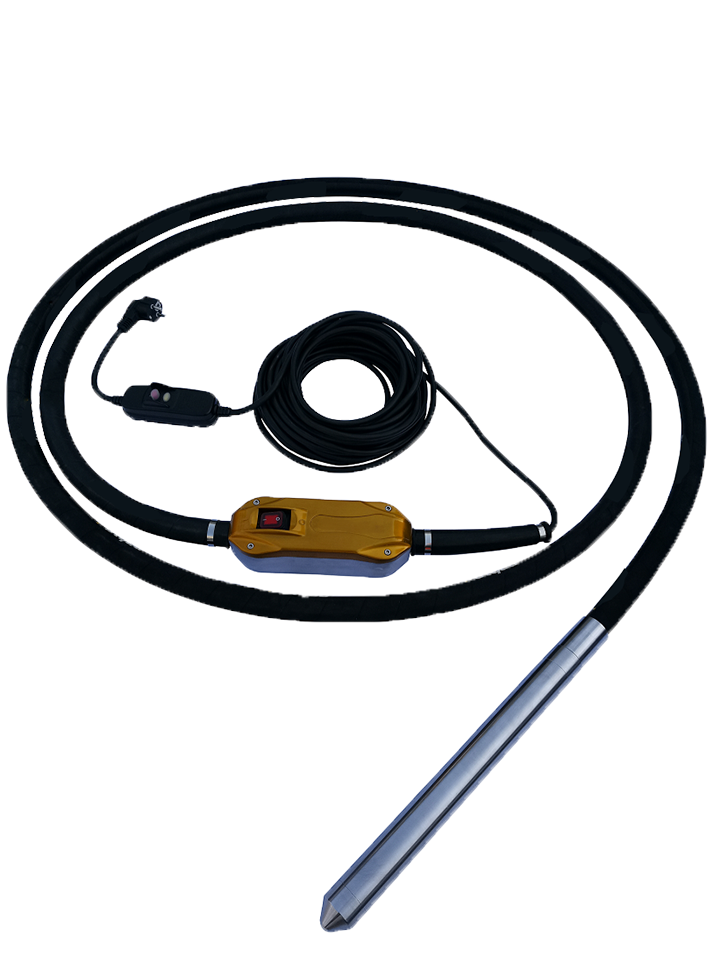
| Model | PME-IH |
|---|---|
| Motor | Synchronous permanent magnet motor |
| Head Diameter | 40/45/50/60/65MM |
| Effective Diameter | 55/65/75/90/110CM |
| Performance/hour | 25/30/35/40/45m3 |
| Head Length | 40/42/43/44/50CM |
| Head Weight | 2.85/3.8/4.2/6.2/8.2KG |
| Frequency | 200-240Hz |
| Vibration rpm | 12000rpm |
| Input Voltage | 220V-240v/ (110-300v Available) |
| Current | 3.5/4.8/5.5/6/7.5A |
| Operation Noise | 7M<70decibel |
| Working Teamperature | -20℃~+100℃ |
| Head Hardness | HRC58-62° |
| Control Box | Die-casting, IP66 Slicone Gasket |
| Switch Box | Overheating/Overload Protecion, IP66 |
| Protection Hose | Custemized Rubber Material, 1800N tensile stength, |
| Cable | Customized Cable, Standard 15m, 1- 50m customizible |
| Protection | Overheating/Overload Protection |
| Water Proof | Vibrator Head IP68 |
| Upgrade Version | Module Design, Portable Handle, Remote Control,Flexible Design |
Application
Concrete Vibrator Advantages
High-Frequency Vibration
Generates powerful, high-frequency vibrations to effectively consolidate and remove entrapped air from fresh concrete, ensuring a dense and durable final product.
Versatile Sizes
Available in various sizes and configurations, ranging from small handheld units to large-scale vibrators for heavy-duty concrete applications.
Efficient Operation
Designed for easy maneuverability and efficient vibration transfer, allowing for thorough and uniform consolidation of concrete in various forms and sections.
Durable Construction
Built with rugged materials and components to withstand the demanding construction environment and ensure long-lasting performance.
Types of Concrete Vibrators
Concrete vibrators come in various types, each suited for different applications and project sizes. Understanding these types can help you choose the right tool for your specific needs.
Internal Vibrators
Needle Vibrators
Needle vibrators, also known as poker or immersion vibrators, are the most common type used in construction. They consist of a vibrating head (the needle) that is inserted directly into the concrete. These are ideal for large pours and deep concrete forms.
Immersion Vibrators
Similar to needle vibrators, immersion vibrators are used for deep concrete placements. They are highly effective in ensuring thorough consolidation in large concrete masses.
External Vibrators
Shutter Vibrators
Shutter vibrators are attached to the exterior of formwork. They are primarily used when internal vibrators cannot be applied, such as in thin or heavily reinforced concrete sections.
Form Vibrators
Form vibrators are another type of external vibrator that is affixed to the concrete formwork. They are useful for precast concrete and situations where internal vibration might disturb the form or reinforcement.
Surface Vibrators
Screed Vibrators
Screed vibrators are used on the surface of wet concrete slabs. They help to level and compact the concrete, ensuring a smooth finish.
Plate Vibrators
Plate vibrators, or plate compactors, are used on flat surfaces. They are particularly effective for compacting thin concrete layers and surfaces that require a high degree of finish.
How Concrete Vibrators Work
Understanding the science behind concrete vibrators can help in using them more effectively.
The Science Behind Concrete Vibrators
Concrete vibrators work by producing rapid oscillations that cause the concrete mixture to liquefy temporarily, allowing trapped air bubbles to rise to the surface and escape. This process also helps in settling the aggregate particles more tightly together.
Vibration Frequency and Amplitude
The efficiency of a concrete vibrator depends on its frequency (vibrations per minute) and amplitude (the extent of the vibration). High-frequency, low-amplitude vibrations are ideal for consolidating smaller particles, while low-frequency, high-amplitude vibrations are better for larger aggregate mixes.
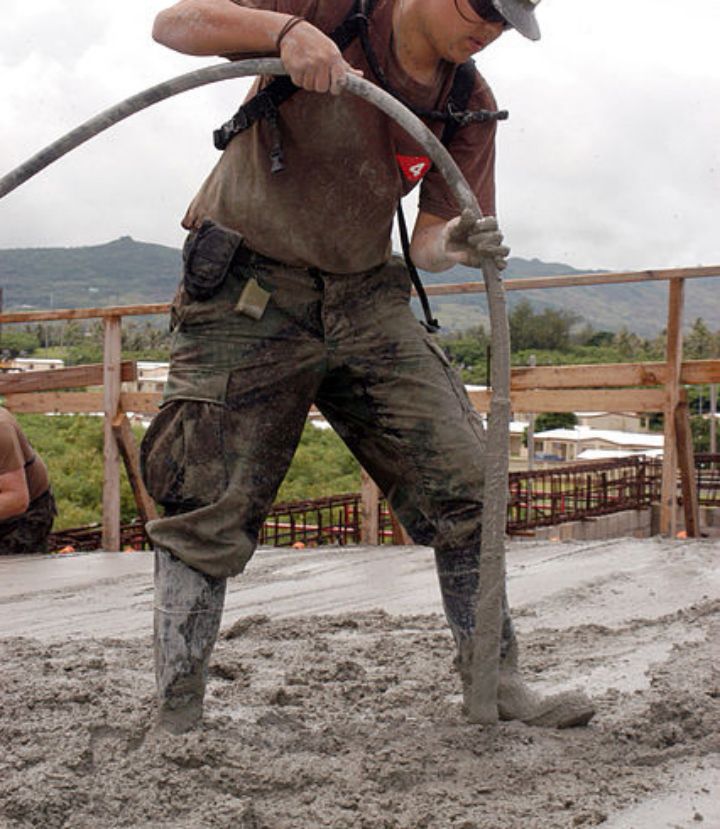
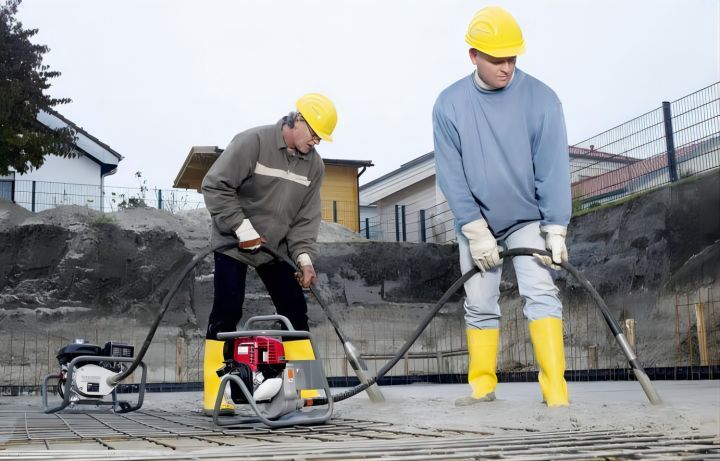
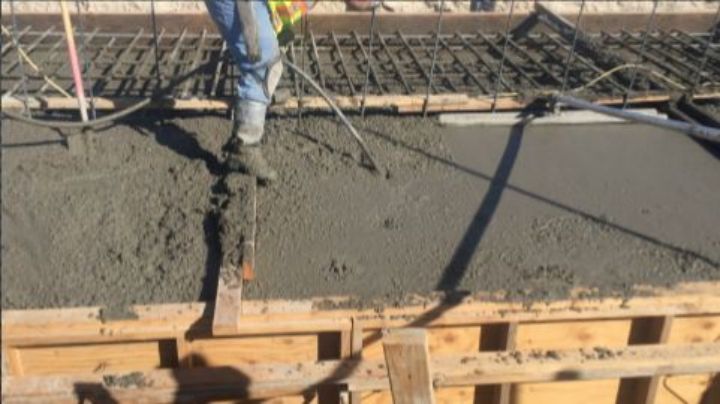
Benefits of Using Concrete Vibrators
The benefits of using concrete vibrators are numerous, contributing significantly to the quality and durability of concrete structures.
Improved Concrete Strength
By removing air bubbles and ensuring uniform compaction, concrete vibrators help in achieving a denser and stronger concrete mix, enhancing the overall strength of the structure.
Enhanced Durability
Properly consolidated concrete is less prone to cracks and voids, which increases its durability and longevity.
Better Surface Finish
Concrete vibrators ensure a smoother and more uniform surface finish, which is particularly important for visible concrete elements.
Reduction of Air Bubbles
Air bubbles can weaken concrete and lead to structural issues. Vibrators effectively eliminate these bubbles, ensuring a solid and reliable concrete mass.
Choosing the Right Concrete Vibrator
Selecting the right concrete vibrator depends on various factors, including the type and scale of the project.
Factors to Consider
When choosing a concrete vibrator, consider the following factors:
- The size and type of the job
- The type of concrete being used
- The depth of the pour
- The power source available
Job Size and Type
For large construction projects, internal vibrators like needle vibrators are ideal. For smaller, surface-level jobs, a screed or plate vibrator might be more suitable.
Power Source
Concrete vibrators can be powered by electricity, gasoline, or air. Choose a power source that is convenient and reliable for your specific job site conditions.
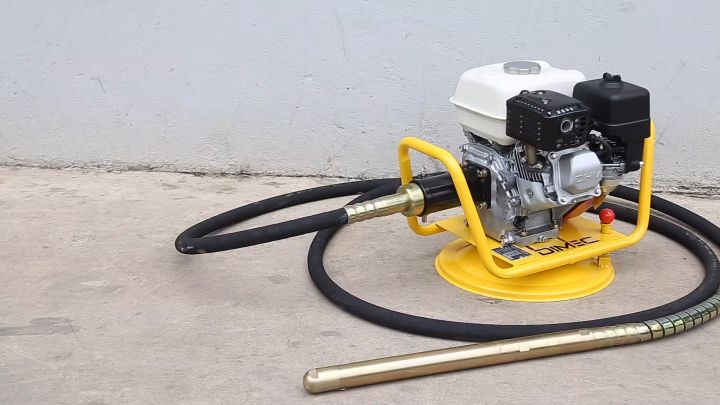
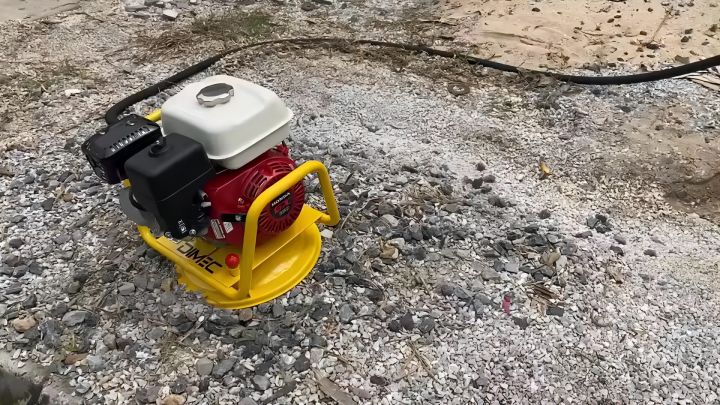
The duration depends on the type of concrete and the vibrator. Generally, 5-15 seconds per insertion is sufficient.
Yes, smaller models like screed or plate vibrators are suitable for DIY projects.
For large sites, internal vibrators like needle or immersion vibrators are recommended for their deep penetration and effectiveness.
A properly working vibrator should create a noticeable vibration in the concrete, with air bubbles rising to the surface. Regular checks and maintenance are also crucial.
While hand tamping is an alternative, it is less effective and not recommended for large or critical structural projects.
Maintenance
Engine periodic maintenance schedule
| Each use | First month or 20 hours | Every 3 months or 50 hours | Every 6 months or 100 hours | Every year or 300 hours | ||
|---|---|---|---|---|---|---|
| Engine oil | Check level | √ | ||||
| Change | √ | √ | ||||
| Air cleaner | Check | √ | ||||
| Clean | √(1) | |||||
| Replace | √☆ | |||||
| Sediment Cup | √ | |||||
| Spark plug | Check-Clean | √ | ||||
| Replace | √ | |||||
| Spark arrester(optional parts) | Clean | √ | ||||
| Idle speed | Check-Adjust | √(2) | ||||
| Valve clearance | Check-Adjust | √(2) | ||||
| Fuel tank and strainer | Clean | √(2) | ||||
| Combustion chamber | Clean | After every 300 Hrs. (2) | ||||
| Fuel line | Check | Every 2 years (Replace if necessary) (2) | ||||
☆ Replace the paper element type only.
(1)Service more frequently when used in dusty areas.
(2)These items should be serviced by your servicing dealer unless you have the proper tools and are mechanically proficient. Refer to manual for service procedures.
Performed at every indicated month or operating hour interval, whichever comes first.